
How would a priceless collection of Tiffany glass survive a catastrophic earthquake? Takeo Horiuchi didn’t want to find out. As one of the world’s most respected and passionate collectors of Louis Comfort Tiffany glass, lamps, and other decorative objects, Horiuchi learned last year that the new museum he was planning to build for his incomparable collection of fragile masterpieces was located in a highly active earthquake zone.
Fearful that almost 20 years of effort might be turned into pricey piles of glass shards with a few ill-timed shakes of the earth, Horiuchi decided that protecting the objects he’d come to know and love was more important than owning them. Thus, he reached out to the same art-world insider who’d helped him acquire the collection to oversee its sale. The financial terms of the deal were obviously important (to paraphrase Muhammed Ali, ‘Ain’t nobody don’t need another five million dollars’…), but by all accounts, Horiuchi’s main goal was the safety of the work.
“It’s the Horiuchi collection, the absolute pinnacle of Tiffany.”
Which is why the arrival of Takeo Horiuchi’s collection of Tiffany objects in the San Francisco Bay Area is so surprising. Like Mr. Horiuchi’s native Japan, San Francisco is in serious earthquake country. In fact, the new ZIP code for the collection, the small community of Alameda next door to Oakland, sits perilously close to an earthquake fault that’s even more active than the one that devastated much of San Francisco in 1906.
What’s going on here? Two words: Allen Michaan, whose love for all things Tiffany, especially Tiffany stained glass, may rival Horiuchi’s. Michaan also happens to run a growing, regional auction house that bears his name, which means that by acquiring the Garden Museum collection from Horiuchi, Michaan will be dispersing some of the best examples of Tiffany Studios lamps, windows, mosaics, desk sets, vases, and paintings into the world. The first 170-plus Tiffany pieces from the Horiuchi collection will be auctioned off on November 17, 2012, at Michaan’s Auctions in Alameda, California. Titled “Treasures of Louis C. Tiffany from the Garden Museum, Japan,” the works will be on view beginning November 2.

Above: Various stages in the window-making process are seen in a photo of the Tiffany Studios glass shop, circa early 1900s. Top: This Peony Table Lamp, circa 1900, features a crab-motif base, which was used in some of the earliest, non-electric Tiffany lamps.
No name in American decorative art is as revered as Tiffany. The Tiffany legend began in 1837, when Charles Lewis Tiffany (1812-1902) founded Tiffany & Co. in New York City, selling stationery supplies and gifts before making a name for himself in jewelry and sterling silver. By 1865, Tiffany’s customers included President Abraham Lincoln, who gave his wife, Mary, a Tiffany silver and seed pearl necklace, with matching bracelets, to wear at his second inaugural ball. By the mid-20th century, the word Tiffany was familiar enough to use in song lyrics (“Diamonds Are a Girl’s Best Friend”) and movie titles (“Breakfast at Tiffany’s”).
Tiffany’s son, Louis Comfort Tiffany (1848-1933), followed in his father’s footsteps, although he staked his reputation on decorative-art objects such as vases and lamps. In 1879, the younger Tiffany launched Louis C. Tiffany and Co., Associated Artists. The firm’s preoccupation with blown and cut glass resulted in a name change to Tiffany Glass Co. in 1885, while its drive to diversify caused it to rebrand itself in 1892 as Tiffany Glass and Decorating Co. Finally, in 1900, Tiffany simplified his company’s name, but definitely not its product line, as Tiffany Studios, which went out of business in 1932.

Left: This scent bottle from around 1905 is made of Cypriote glass and features an amethyst stopper. Right: Exhibited at the 1900 Exposition Universelle in Paris, this scent bottle comes with its own stand.
Michaan’s resume is somewhat less storied than Tiffany’s. The Northern California auctioneer began his career in the arts running and restoring movie theaters (he still owns the Grand Lake Theater in Oakland), and is known to many in the San Francisco Bay Area as the guy behind the Alameda Point Antiques Faire, which attracts roughly 10,000 shoppers to an abandoned Naval Air Station runway on the first Sunday of every month. Though he’s collected Tiffany windows for more than 30 years, Michaan has only been in the auction business since 2002, making him a newcomer compared to stalwarts such as Sotheby’s, Christie’s, and Bonhams.
By all rights, Horiuchi’s Tiffany horde should have ended up at Sotheby’s or Christie’s, both of whom wanted it, but Michaan had an ace up his sleeve; a Louis Comfort Tiffany expert named Alastair Duncan, who helped Michaan and a group of investors purchase more than 600 objects from Horiuchi’s vast holdings. “Alastair brought me the deal and helped me put it together,” says Michaan. “He’s described it as the biggest transaction ever to occur in the decorative arts. It takes our auction house to a completely new level.”

Tiffany artists often used Queen Anne’s lace as a design motif, including in this ceramic vase, made between 1905 and 1917.
Duncan knew how good Horiuchi’s collection was because he helped Horiuchi acquire much of it. “In 1992, I was going to Japan almost every month, sometimes fortnightly,” Duncan recalls. On one trip, a representative of Mr. Horiuchi’s contacted Duncan, who took the bullet train to Nagoya to meet him. “He was a very charismatic, passionate character,” says Duncan of his first meeting with Horiuchi. “We’ve been friends ever since.”
The previous year, the deep-pocketed Tiffany lover had been impressed by Duncan’s “Masterworks of Louis Comfort Tiffany” exhibition, which had made a stop in Nagoya. Naturally, Horiuchi wanted Duncan’s opinion of his burgeoning collection. “He had it stored in a warehouse,” remembers Duncan, “so we went to have a look. I asked him, ‘Where do you want to go with this, Mr. Horiuchi?’ and he said, ‘I want to be a big collector.’ And I said, ‘What level do you want?’ and he said, ‘Top.’ I’ll never forget it. He said, ‘I want everything.’ It was Horiuchi’s initiative, no one else’s. And so, off we went. It was a hell of a ride.”
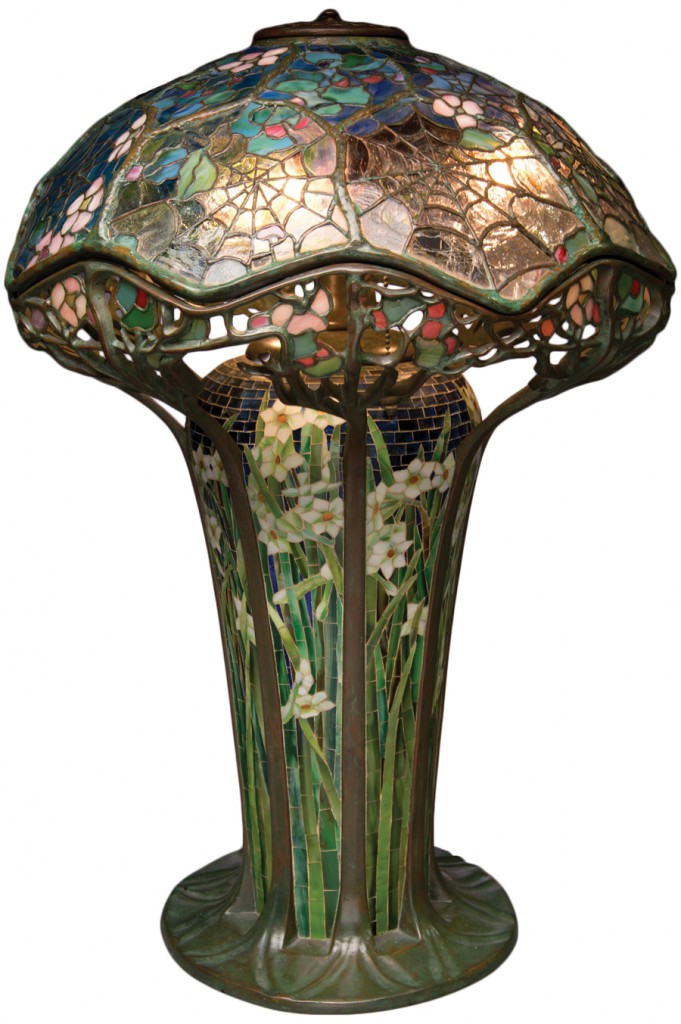
This Cobweb Table Lamp from 1900 or 1901, one of only seven known examples, is probably the most important piece in the Michaan’s auction.
“Mr. Horiuchi retained Alastair to advise him,” explains Michaan, “because he had bought a few lamps that were not good, which is a big problem with Tiffany lamps out there today.” Examples of “not good” lamps range from outright fakes to less-detailed “standard” models for which an unknowledgeable collector might pay an “elaborate” price. “Alastair guided him to the auction houses,” Michaan continues, “but he also bought many things from private collectors. Over the course of almost 20 years, with Alastair’s help, Mr. Horiuchi built what I think was the finest collection of Tiffany in the world.”
That collection included the best examples of Tiffany’s intricately detailed leaded-glass lamps, whose shades are ringed with dragonflies or drip with wisteria blossoms and whose Art Nouveau bases are formed from cast bronze; stunning stained-glass windows, produced for churches and private residences alike; and, of course, lots of vases, be they the Gallé-inspired Flowerforms, the iridescent peacock-feather-motif Favriles, or the deformed lava pieces, which were reportedly inspired by a trip Tiffany took to Sicily during an eruption of Mt. Etna.

Lava glass was said to have been influenced by Tiffany’s experience of seeing Mt. Etna erupt in Sicily.
But Horiuchi wanted more than just Tiffany’s Greatest Hits. He was also impressed by Tiffany Studios metalwork, from candlesticks and clocks to andirons and ash stands. On his behalf, Duncan sought out Tiffany Studios glazed earthenware, many of which took their forms from vegetables and flowers. And he went deep on Tiffany’s own paintings—as a young man, Tiffany studied with Hudson River School painter Samuel Colman, as well as George Inness, and he painted well into the later years of his life.
To say that Horiuchi was ambitious for his collection is putting it mildly. He built his first Tiffany museum in Nagoya in 1994, and his second in Matsue in 2001. By 2011, Horiuchi was well on his way to building a third home for his collection (the first proved too small, the second was deemed too out of the way) when he abruptly decided to sell everything.
“I would never ever have foreseen this,” says Duncan. “I still kind of pinch myself. He sent his son and nephew to my office in New York last October and they said they had made the decision to sell the collection. When I asked why, they brought out this huge multi-colored map, which had been released by the Japanese government following the earthquake, tsunami, and Fukushima nuclear meltdown.”

The “Elaborate” version of the Tiffany Studios Grape Table Lamp, shown here, had more grapes than the “Standard” version.
The map and other documents revealed that the site of Horiuchi’s planned museum at Mt. Fuji was projected to experience three earthquakes of between 8 and 9 on the Richter scale within the next 30 years. It was a beautiful spot, but Horiuchi could not have picked a worse location for his fragile treasures. “I think it just broke Mr. Horiuchi’s spirit,” says Duncan. “He felt he would never get insurance, and that his whole collection could be destroyed.”
According to Duncan, Allen Michaan was not the only suitor interested in Horiuchi’s collection. “Christie’s and Sotheby’s were trying every trick, but luckily for Allen and me, neither house would commit to a guarantee, which is what they sometimes do. In this case, with 618 objects, they wouldn’t commit.”

Flowerforms such as this one were influenced by Tiffany’s exposure in 1889 to the work of Emile Gallé.
In fact, the arrogance of the old-school auction houses may have been their undoing. “I thought it was quaint that after everything was all settled and Mr. Michaan had signed the contract and made his initial deposit, Mr. Horiuchi’s sons went to Tokyo and told Christie’s and Sotheby’s that the collection had been sold to a private person. Sotheby’s didn’t believe it; they didn’t believe there was an Allen Michaan out there.”
Now that Allen Michaan is in control of the Garden Museum collection, he’s the one taking the risk, both from a business standpoint as well as for the collection’s safety. “The irony, of course,” says Duncan, “is that Michaan’s Auctions sits on top of the San Andreas Fault.” In fact, Alameda is closer to the Hayward Fault, which is actually more active than the better-known San Andreas. Still, with an auction just weeks away, the pieces probably won’t be there for long.

A Laburnum lampshade mounted on what’s known as a bird-skeleton bronze base.
The out-of-the-way Alameda location is actually less of a factor than you might think. “It’s not New York,” allows Duncan. “It’s Alameda, but today you can sometimes get a higher price in an obscure regional auction house than you can at Sotheby’s or Christie’s. People are always on the lookout for that hidden work of art. In this case, though, it’s irrelevant because of what Allen is offering. It’s the Horiuchi collection, the absolute pinnacle of Tiffany. Allen is being very brave, but he’s got what everybody wants.”
Including Allen Michaan. And that’s probably the biggest difference between Michaan’s and other auctions houses: Michaan’s is run by a major Tiffany collector, a person who is as passionate about Tiffany as Takeo Horiuchi was, especially Tiffany windows. “I’ve always loved windows,” Michaan says. “We’ll have some windows in the auction, but nothing really huge. I find it very hard to sell huge windows.”

These two panels are part of a wisteria triptych created between 1910 and 1915.
“His particular passion is windows,” concurs Duncan. “So the major windows are not in there. I don’t know how he’s determined what to keep and what to give up, but he’s obviously kept those items that he wants for himself.” For example, up for auction are two out of three panels from a 1910-1915 stained-glass triptych, depicting wisteria in the foreground and mountains off in the distance. Despite missing a panel, the two windows make a handsome pair.
But it’s no Gould window, which is not up for auction in Alameda but was part of Michaan’s purchase of works from Horiuchi. Commissioned by Miss Helen Gould, whose father, Jay, was perhaps the most gilded tycoon of the Gilded Age, the Gould window was a major holding of the Garden Museum’s collection. Composed of some 4,000 pieces of glass, which are divided into eight horizontal panels that together stand 130 inches tall (i.e., it’s “huge”), this window was in Duncan’s “Masterworks of Louis Comfort Tiffany” exhibition, and a photo of the window on view at the Metropolitan Museum of Art in New York, as well as detailed documentation about its impressive provenance, take up several pages of the Garden Museum catalog.

This Scarab Stamp Box was probably inspired by the craze for Egyptian Revivalism.
Collectors looking to get their hands on Horiuchi’s extraordinary Art Nouveau holdings will have their opportunity to do so early next year. “That portion of the collection is on its way to Paris right now,” says Michaan. “It’s an amazing Art Nouveau collection. Gallé and Lalique and Majorelle, some of the most important pieces those designers ever created. It will be presented at Sotheby’s Paris on Saturday, the 16th of February.”
“I’m more confident in the Paris selection,” says Duncan, “because I know that’s the right venue for it. It’s European. It’s French Art Nouveau, turn of the century, and the market is there.”
But Sotheby’s? Aren’t they the enemy? “I adamantly felt that Paris should be the venue for the Art Nouveau collection. It should not be anywhere else,” says Michaan. “We’ve forged a wonderful relationship with Sotheby’s vice chairman, Ben Doller. So Sotheby’s is happy, they got the Paris sale.”
SLIDESHOW: Tiffany Does Alameda
(All photos courtesy Michaan’s Auctions.)

















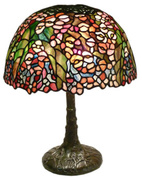
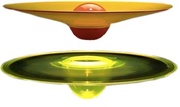 U.S. Studio Art Glass, Before and After Chihuly
U.S. Studio Art Glass, Before and After Chihuly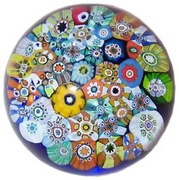
 Tiffany Lamp Appraiser Arlie Sulka: An Interview with Collectors Weekly
Tiffany Lamp Appraiser Arlie Sulka: An Interview with Collectors Weekly U.S. Studio Art Glass, Before and After Chihuly
U.S. Studio Art Glass, Before and After Chihuly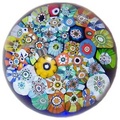 Getting Lost in Strathearn Art Glass Paperweights
Getting Lost in Strathearn Art Glass Paperweights Tiffany Style LampsTiffany-style lamps—still tremendously popular more than 100 years after th…
Tiffany Style LampsTiffany-style lamps—still tremendously popular more than 100 years after th… Tiffany Art GlassWhen we think of American Art Nouveau art glass, the objects that first spr…
Tiffany Art GlassWhen we think of American Art Nouveau art glass, the objects that first spr… Art NouveauArt Nouveau architecture, furniture, jewelry, and graphics took their inspi…
Art NouveauArt Nouveau architecture, furniture, jewelry, and graphics took their inspi… Mari Tepper: Laying it on the Line
Mari Tepper: Laying it on the Line Nice Ice: Valerie Hammond on the Genteel Charm of Vintage Canadian Costume Jewelry
Nice Ice: Valerie Hammond on the Genteel Charm of Vintage Canadian Costume Jewelry How Jim Heimann Got Crazy for California Architecture
How Jim Heimann Got Crazy for California Architecture Modernist Man: Jock Peters May Be the Most Influential Architect You've Never Heard Of
Modernist Man: Jock Peters May Be the Most Influential Architect You've Never Heard Of Meet Cute: Were Kokeshi Dolls the Models for Hello Kitty, Pokemon, and Be@rbrick?
Meet Cute: Were Kokeshi Dolls the Models for Hello Kitty, Pokemon, and Be@rbrick? When the King of Comedy Posters Set His Surreal Sights on the World of Rock 'n' Roll
When the King of Comedy Posters Set His Surreal Sights on the World of Rock 'n' Roll How One Artist Makes New Art From Old Coloring Books and Found Photos
How One Artist Makes New Art From Old Coloring Books and Found Photos Say Cheese! How Bad Photography Has Changed Our Definition of Good Pictures
Say Cheese! How Bad Photography Has Changed Our Definition of Good Pictures Middle Earthenware: One Family's Quest to Reclaim Its Place in British Pottery History
Middle Earthenware: One Family's Quest to Reclaim Its Place in British Pottery History Fancy Fowl: How an Evil Sea Captain and a Beloved Queen Made the World Crave KFC
Fancy Fowl: How an Evil Sea Captain and a Beloved Queen Made the World Crave KFC
Interesting to hear that Allen Michaan is going to be a big Tiffany collector here in the Bay Area. He’ll compete with Alan Schneider of Antique Traders in San Francisco who has been collecting real Tiffany and other Art Nouveau treasures for 30 years. http://www.sfgate.com/entertainment/article/A-Tiffany-collection-you-can-get-your-hands-on-3250586.php
My teacher told us today about Alastair Duncan and showed us a beautiful book he wrote. So then we learned that he was sentenced to 2 years, 3 months in prison for participating in a theft and resale of a Tiffany window stolen from a cemetery. I can’t find any information about how long he actually went to prison and what he has done since then, etc. We would really like to know!